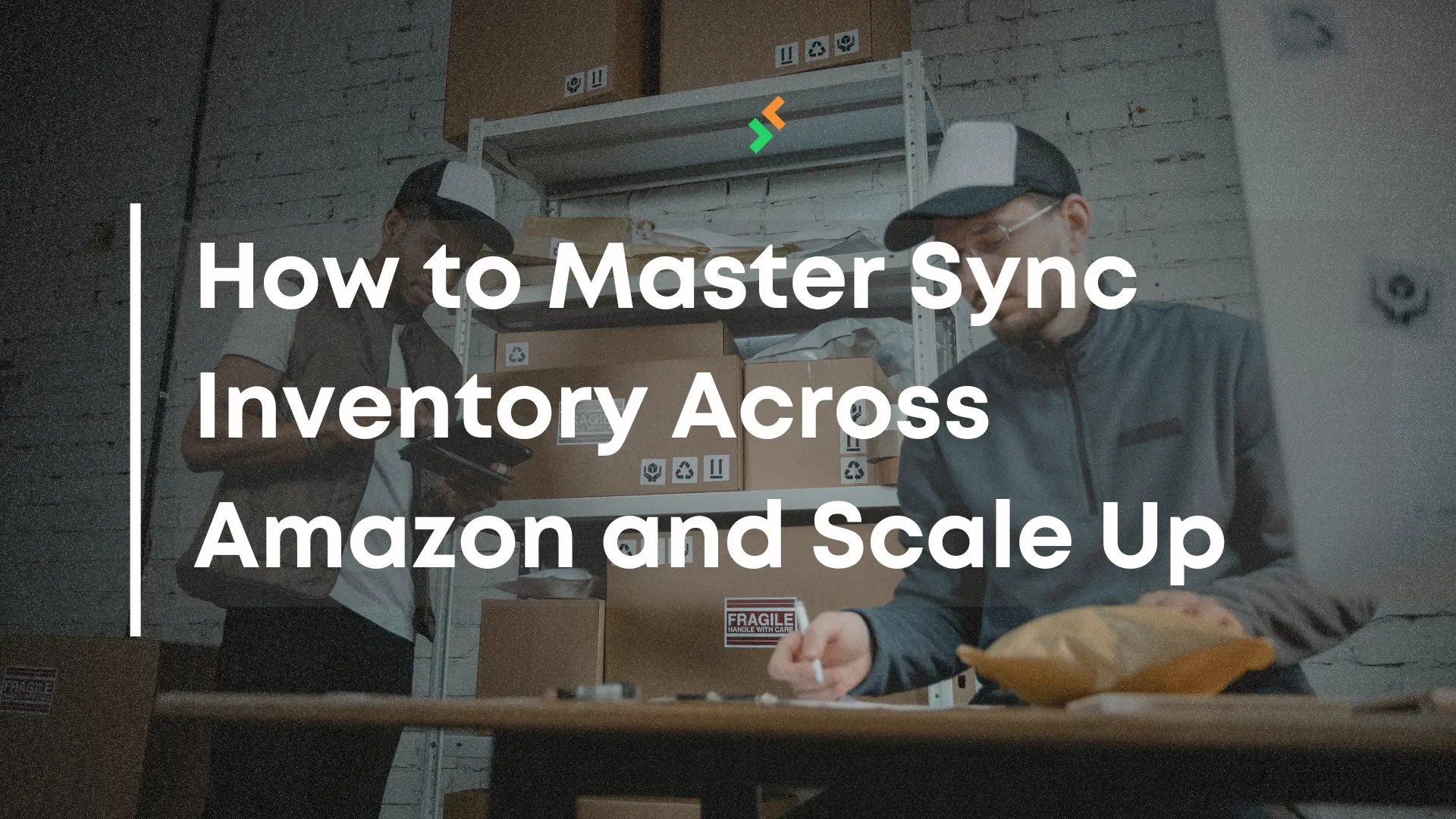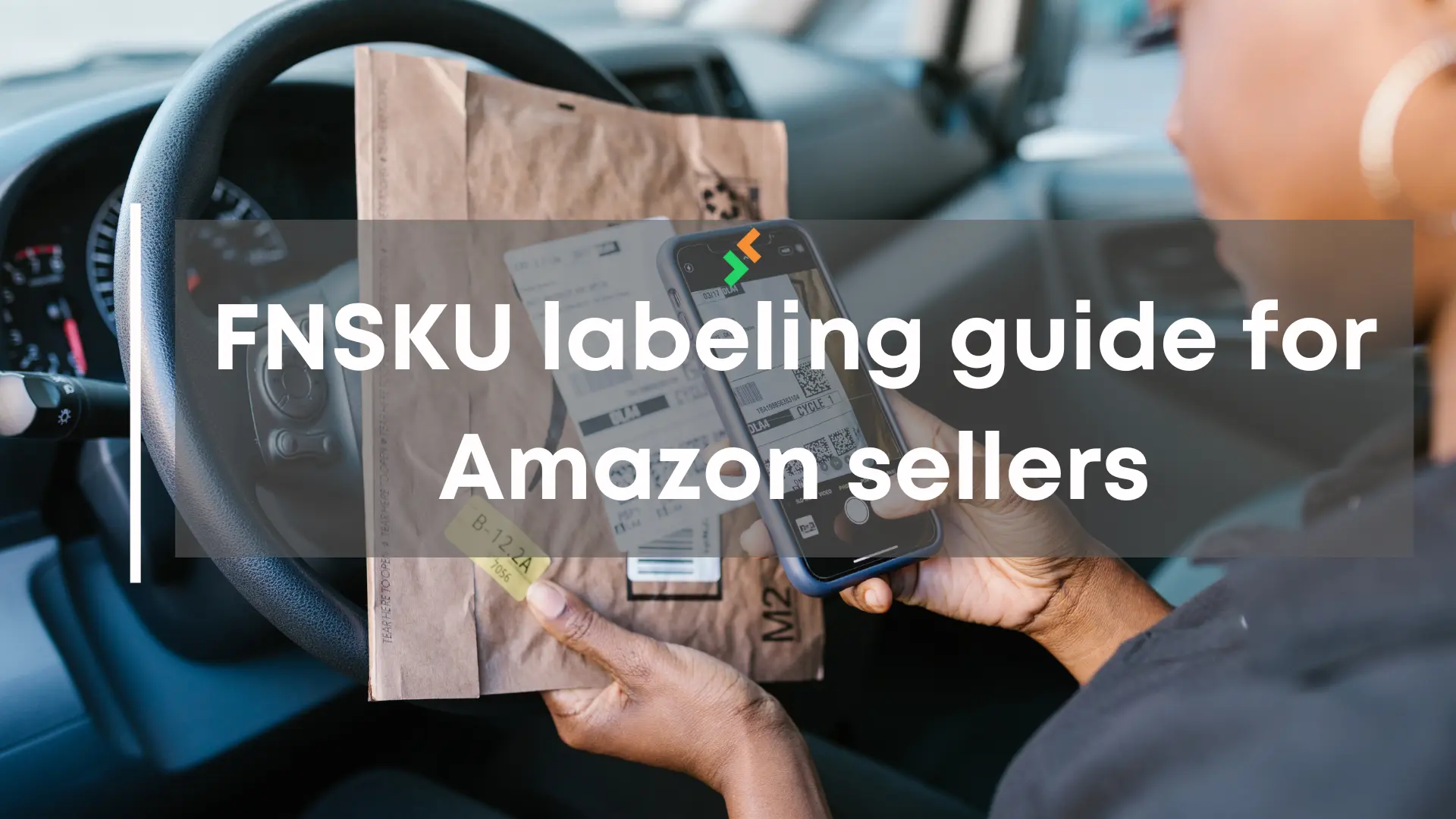
Inventory syncing is the backbone of multichannel selling. When sellers sync inventory across Amazon, they avoid messy oversells, confusing stock counts, and missed opportunities. Without syncing, businesses operate in the dark, reacting to problems instead of preventing them. Proper syncing provides visibility across every platform and warehouse. It ensures that product counts match reality, even when dozens of orders are flying in from different sources.
If your Amazon inventory doesn’t sync with Shopify or Walmart, customer experiences break down fast. Backorders pile up, cancellations increase, and reviews drop. Sync inventory across Amazon to protect both the seller and the customer from costly surprises. This efficiency unlocks time and clarity—two powerful forces in scaling any business.
Table of Contents
What It Means to Sync Inventory Across Amazon
To sync inventory across Amazon means your stock adjusts automatically every time a sale happens. It keeps product quantities aligned between Amazon, Walmart, Shopify, and more. With a synced system, every sale triggers an automatic inventory update across all channels, keeping your listings accurate and reliable.
Why Manual Updates Don’t Work
Manual tracking fails when orders come in fast. If you forget to sync inventory across Amazon and your other stores, overselling is almost guaranteed. Automation keeps things in sync at all times, preventing human errors and saving valuable time.
Multichannel Selling Without Syncing = Trouble
Without syncing inventory across Amazon and other channels, sellers drown in spreadsheets. Orders go unfulfilled. Customers complain. Errors multiply. Syncing transforms chaos into clarity, making your operations scalable and reliable.
Common Mistakes Sellers Make With Amazon Inventory

Ignoring SKU Mapping Across Platforms
Each platform uses unique SKUs. If you don’t map them properly, syncing breaks. One product could be seen as two, throwing your stock data off balance and failing to sync inventory across Amazon accurately.
Relying Only on Amazon’s Default Tools
Amazon offers basic tools, but they are limited to Amazon alone. To sync inventory across Amazon and your other platforms, you need third-party systems that handle multichannel complexity.
Not Using a Centralized Dashboard
When sellers use five apps for five platforms, they lose visibility. A centralized dashboard simplifies operations and ensures you sync inventory across Amazon without the confusion of scattered data.
Disconnected Warehouses and Inventory Points
Sellers managing multiple warehouses often forget to sync them properly. This causes products to show as available in one location and missing in another. The right tool can sync inventory across Amazon and all fulfillment centers seamlessly.
Outdated Spreadsheets Causing Misalignment
Spreadsheets can’t update in real-time. One wrong input can disrupt your entire stock count. Sync inventory across Amazon using automated tools to avoid these costly slipups.
Lack of Training on Inventory Tools
Even the best software fails if your team doesn’t know how to use it. Mistakes in settings or skipped steps can stop your ability to sync inventory across Amazon effectively. Training is as important as the tool itself.
Benefits of Syncing Inventory Across Amazon
Fewer Stockouts and Backorders
With real-time syncing, you’ll know exactly what’s in stock. You won’t oversell or disappoint customers. Sync inventory across Amazon to eliminate guesswork and build trust.
Better Forecasting and Planning
Clean, real-time data allows smarter planning. When you sync inventory across Amazon, your sales forecasts and restocking strategies become more accurate and actionable.
Stronger Brand Image Across Channels
When customers see accurate stock across all channels, they trust your brand. Sync inventory across Amazon to show buyers you’re organized, consistent, and ready to fulfill orders fast.
Features to Look for in Inventory Syncing Tools
Bulk Editing and Auto-Sync Features
The ability to bulk-edit SKUs and run auto-syncing updates every few minutes is essential. These tools ensure that you sync inventory across Amazon consistently and efficiently.
Cross-Platform Compatibility
Look for software that connects with Amazon, Walmart, Shopify, and more. With true cross-platform power, you’ll sync inventory across Amazon and all your selling channels from a single hub.
Alerts and Reporting Options
Choose tools that notify you when stock is low or mismatched. This helps sync inventory across Amazon proactively before any issues affect your customers.
Cloud-Based Access With Multi-User Roles
Cloud access lets your team work from anywhere. Multi-user roles ensure everyone can contribute to syncing inventory across Amazon without overwriting critical data.
Historical Sales Data Integration
Historical trends help you forecast better. Use tools that integrate sales history to sync inventory across Amazon with smarter, data-driven decisions.
How to Sync Inventory Across Amazon With Automation
Step-by-Step Overview of Automation
Start by connecting your Amazon, Walmart, and Shopify accounts. Then map your SKUs, set up sync rules, and activate automation. Once done, the system will sync inventory across Amazon automatically with each sale.
How AI Predicts Inventory Trends
AI tools can recognize buying patterns and alert you when stock is running low. These smart systems sync inventory across Amazon in real time and help avoid stockouts with predictive insights.
Connecting to Shopify, Walmart, and More
Using a tool like CrazyVendor’s inventory management software, you can sync inventory across Amazon, Shopify, and Walmart in one dashboard. It removes the need for manual updates and messy spreadsheets.
Scaling Your Business Once Inventory Is Synced
Focus on Marketing and Product Expansion
Once you sync inventory across Amazon, you free up mental space. Use that time for ads, product development, and smarter growth strategies.
Expand to Global Fulfillment with Confidence
Syncing lets you manage inventory across warehouses in different countries. It’s how global sellers stay efficient. CrazyVendor’s tools also support multichannel expansion, giving sellers full control wherever they grow.
Manage Orders Faster and Smarter
Order management becomes simpler when you sync inventory across Amazon. Tools like CrazyVendor’s order management system make sure every order is routed correctly—reducing delays and customer complaints.
How CrazyVendor Helps You Sync Inventory Across Amazon
Unified Inventory Software Built for Multichannel
CrazyVendor offers a streamlined platform designed to sync inventory across Amazon and your other marketplaces. It unifies product data, automates updates, and brings visibility to every corner of your operation.
Walmart, Shopify, and Amazon Integration
You can sync inventory across Amazon and simultaneously manage your Shopify and Walmart stores from the same dashboard. According to our post on Walmart CRM software with order tracking, syncing improves not only accuracy but fulfillment speed.
Real Seller Results With CrazyVendor Tools
Sellers using CrazyVendor’s tools report fewer stockouts, faster fulfillment, and happier buyers. Their ability to sync inventory across Amazon and other platforms was a major factor in their scaling success.
Inventory Syncing Myths That Hurt Your Business
Myth 1: Manual Tracking Is Good Enough for Small Sellers
Even low-volume sellers can suffer without syncing. If you don’t sync inventory across Amazon, one oversell can lead to bad reviews and canceled orders.
Myth 2: Syncing Tools Are Too Expensive
Failing to sync inventory across Amazon costs more in lost sales and refunds. Affordable tools like CrazyVendor prove that syncing is a smart investment, not an unnecessary expense.
Myth 3: Amazon Alone Is Safe Enough
Amazon’s system doesn’t cover your other stores. If you expand to Walmart or Shopify, syncing becomes non-negotiable.
Conclusion
Scaling your Amazon business doesn’t start with more listings—it starts with more control. When you sync inventory across Amazon, you eliminate blind spots, reduce errors, and gain the power to plan instead of panic. Real-time syncing keeps your entire system running smoothly, from customer experience to warehouse accuracy. It protects your metrics and ensures your listings stay live, visible, and competitive.
Too many sellers wait until it’s too late. By the time the inventory is a mess, the damage is already done. Investing in a system that helps you sync inventory across Amazon early on gives you the confidence to scale without chaos. Whether you’re managing one store or five, syncing transforms your business into a proactive, professional operation—built for real growth.
You can also follow us on social media for more eCommerce insights and updates!










